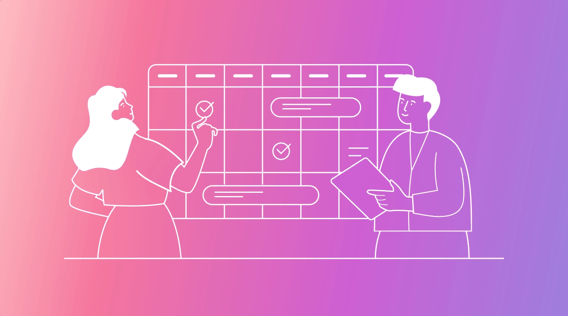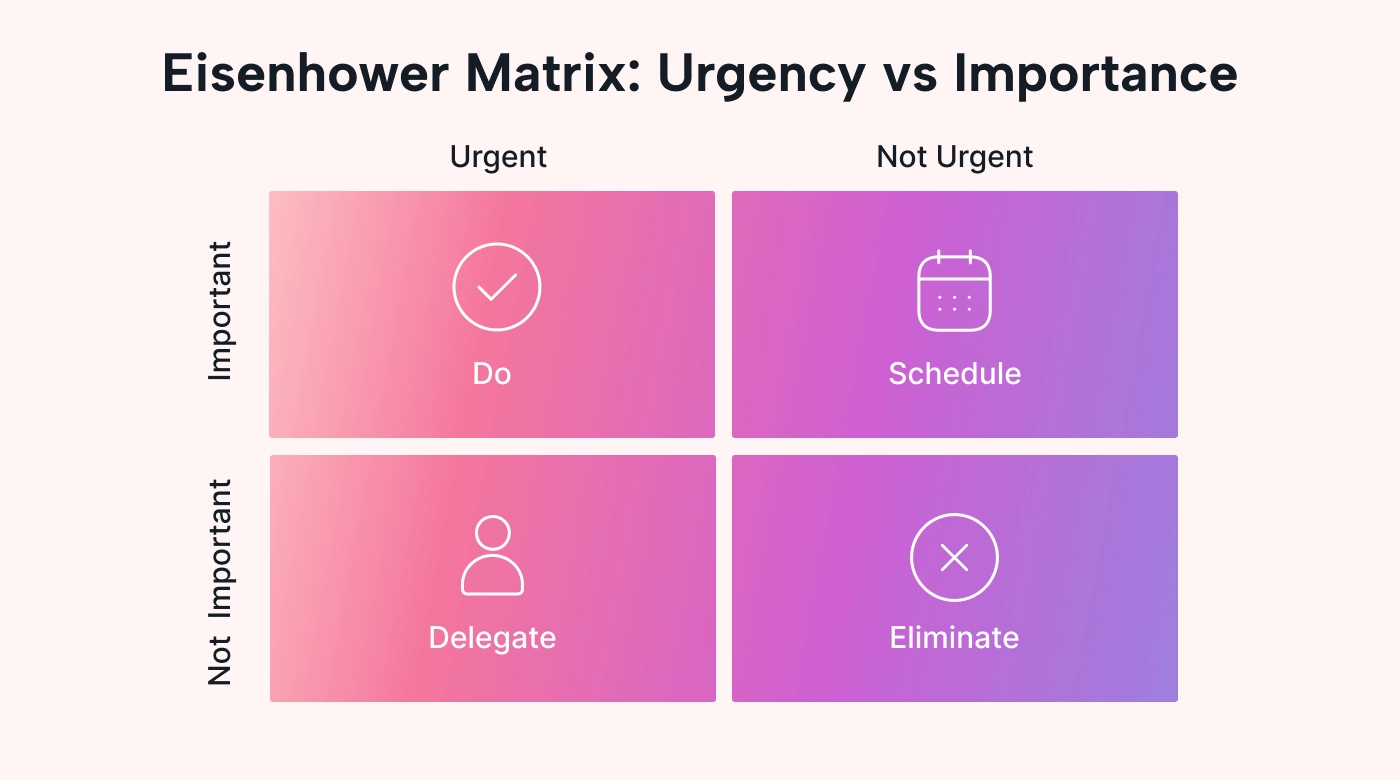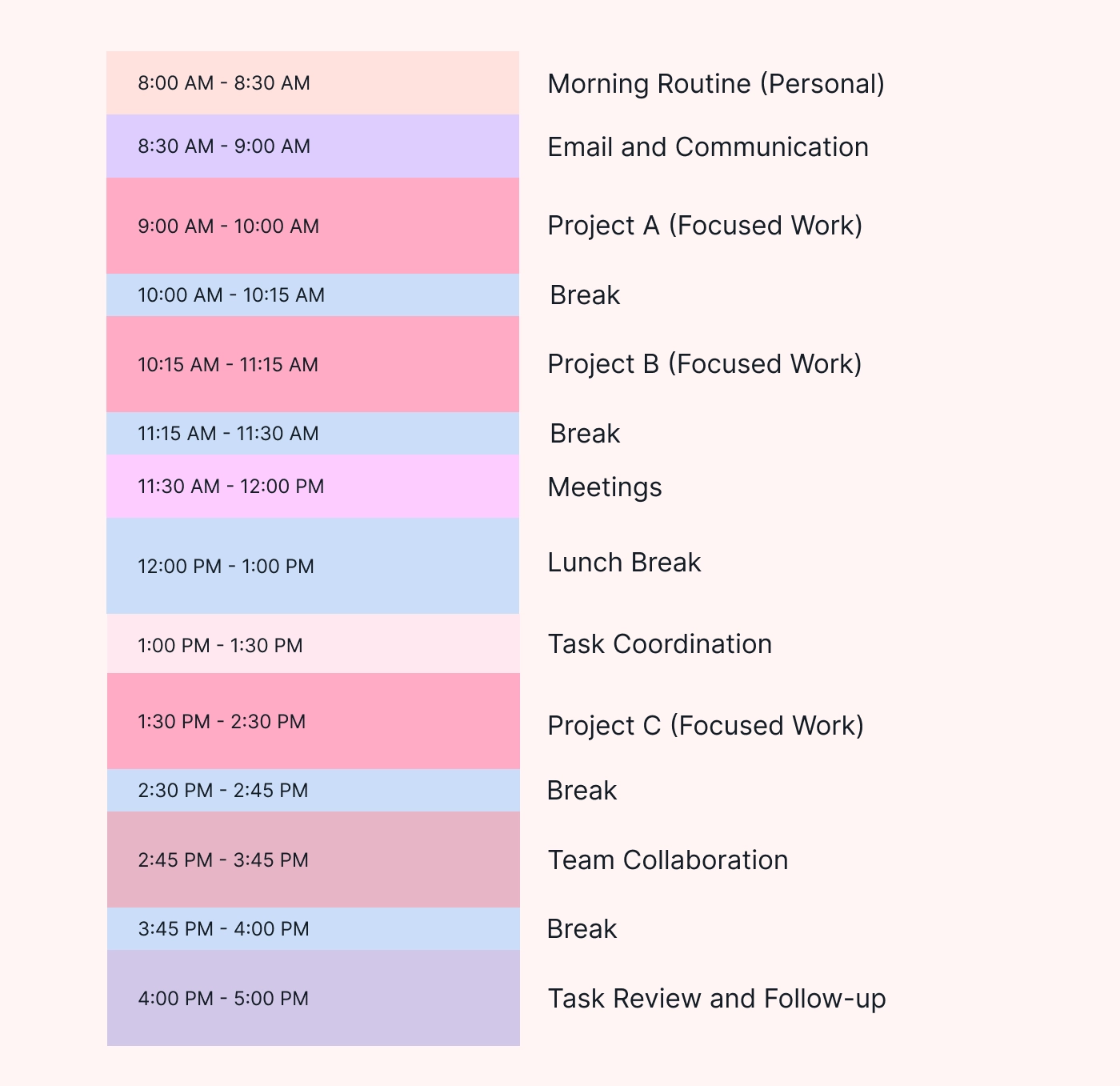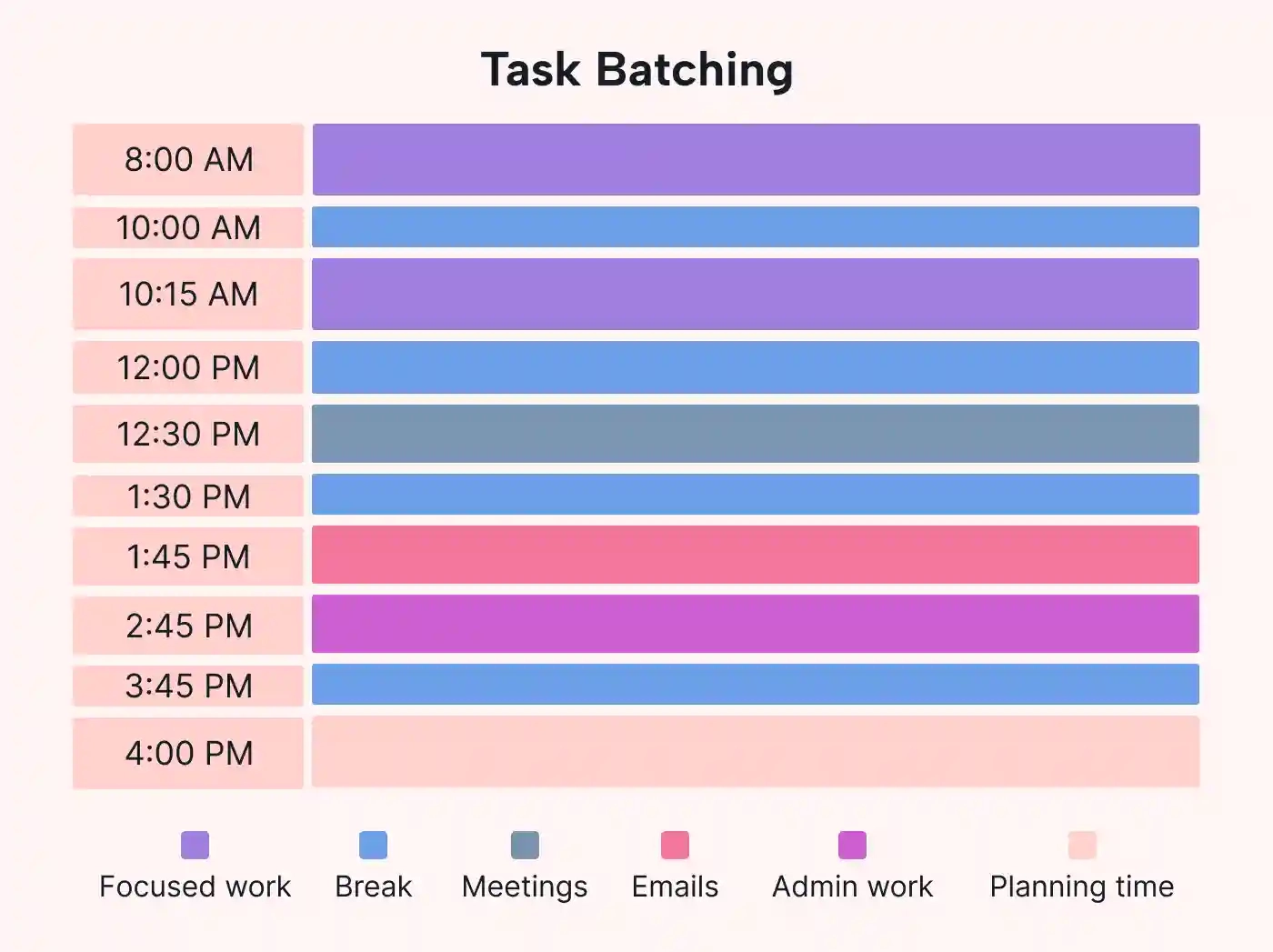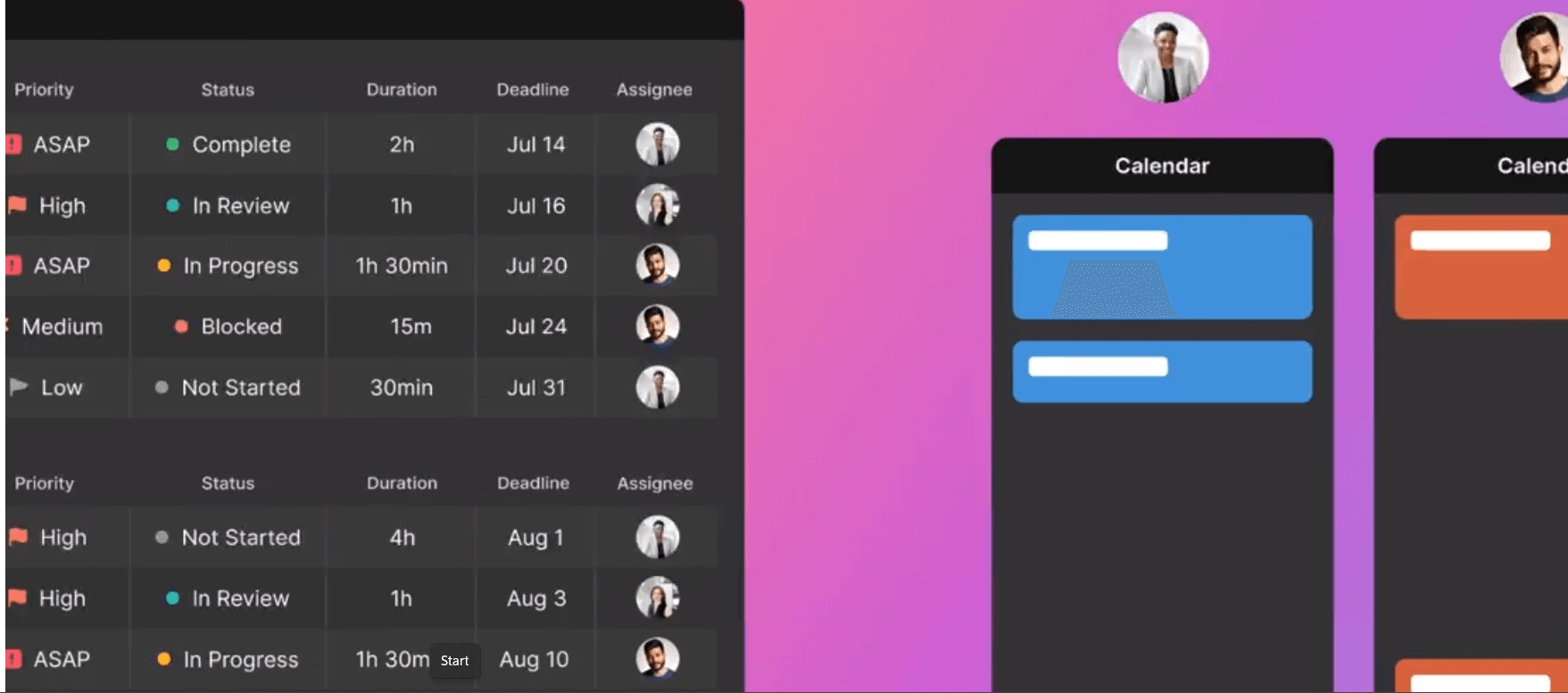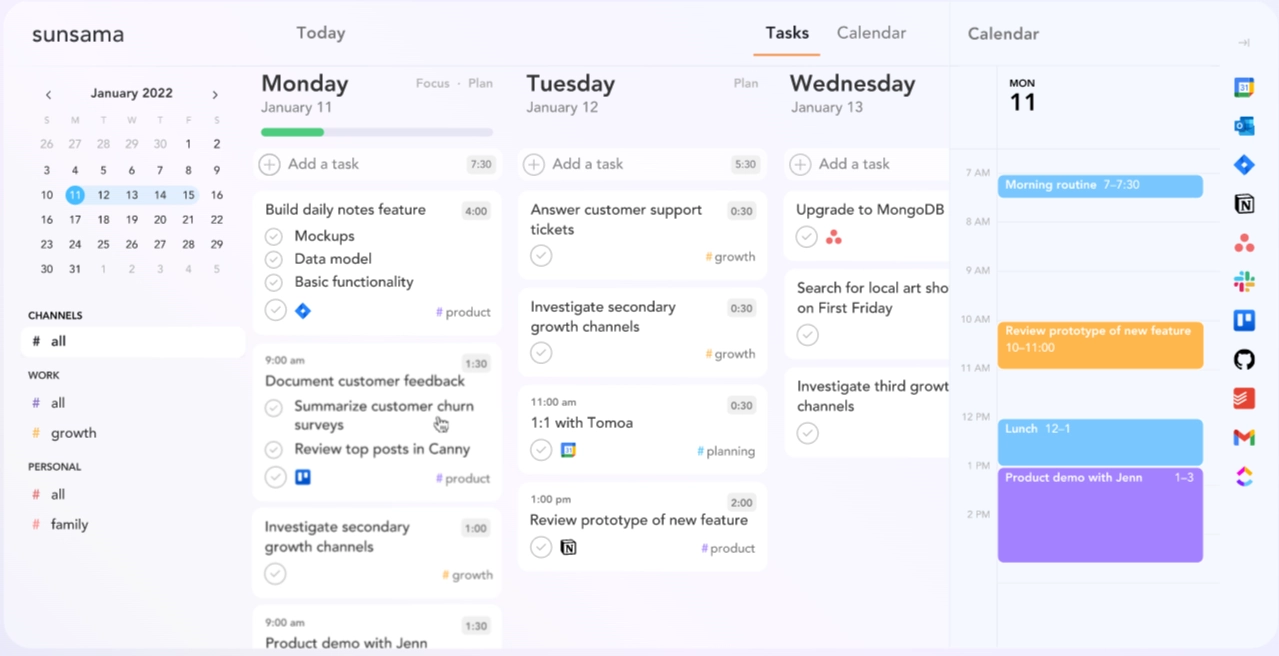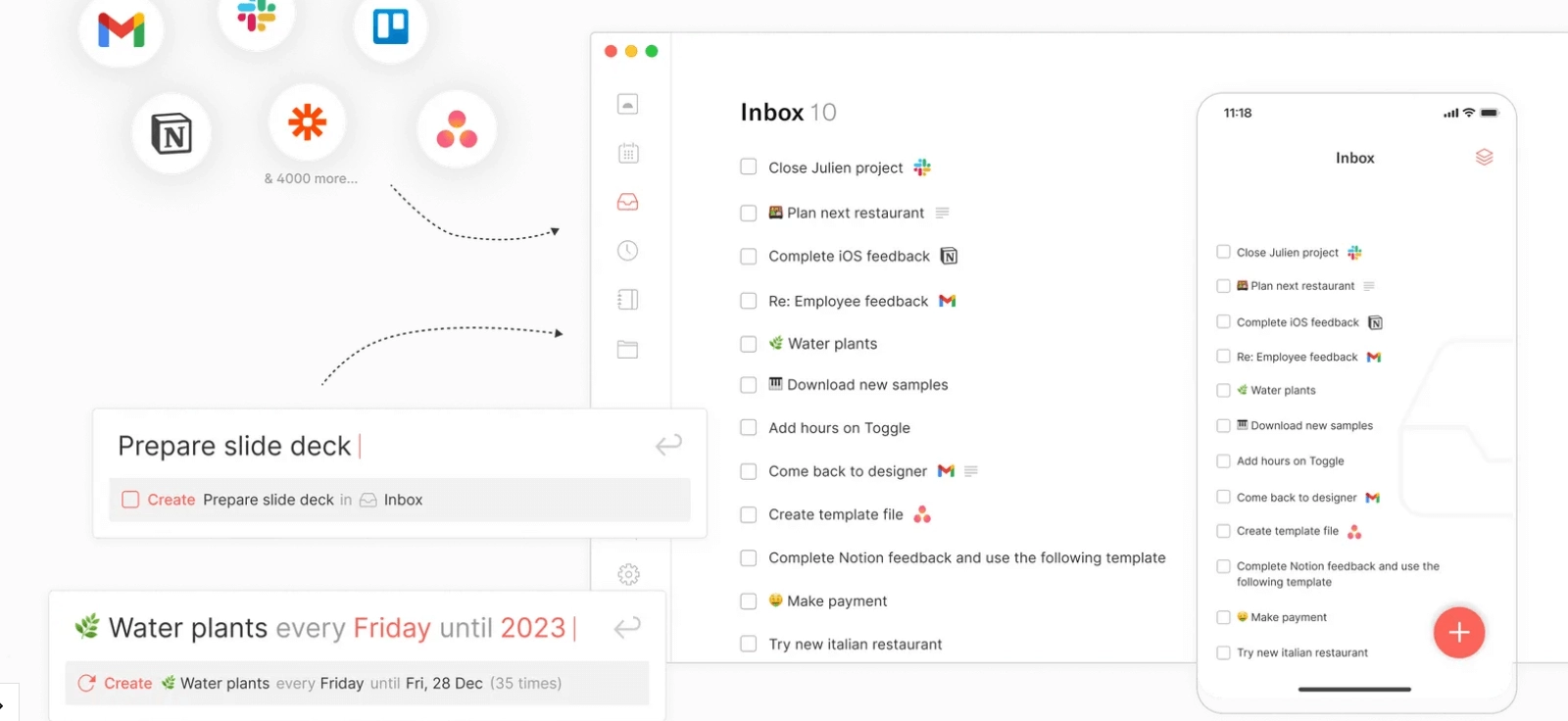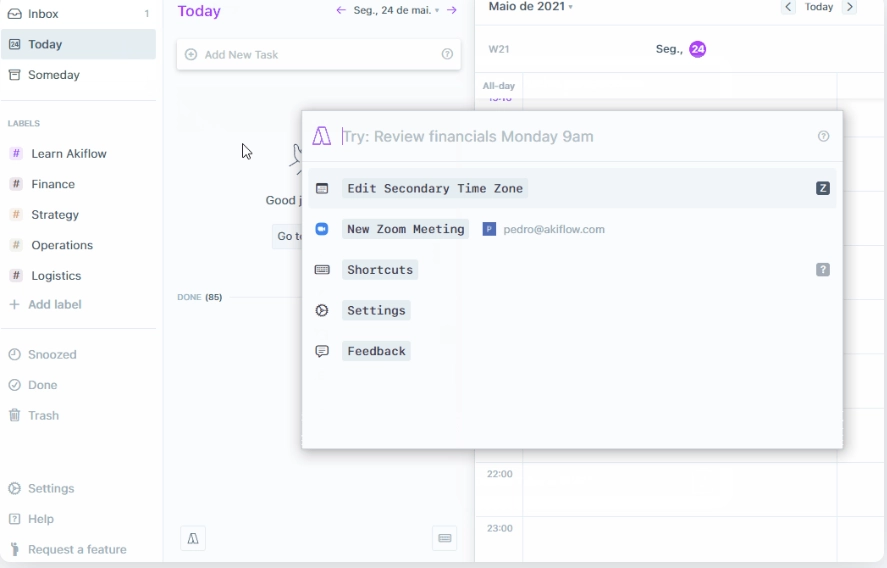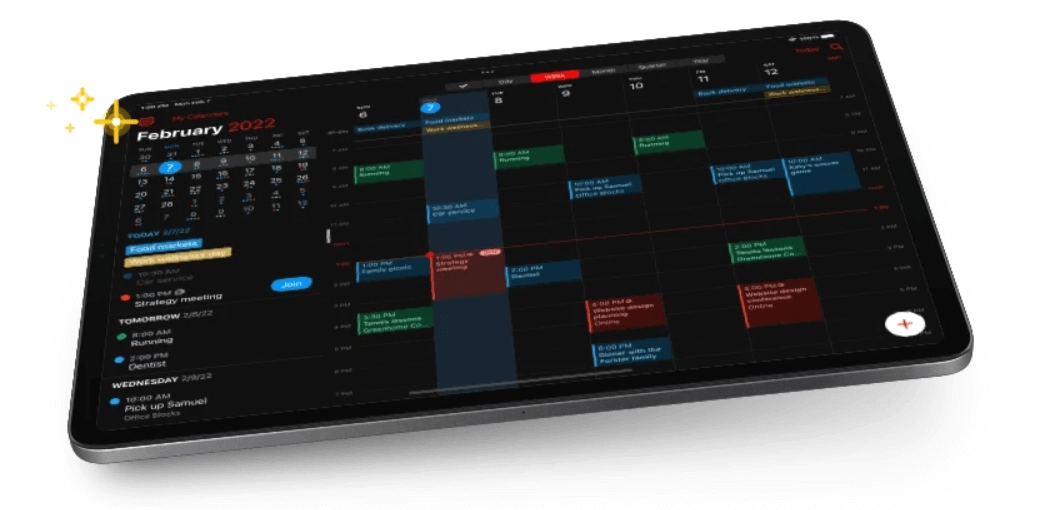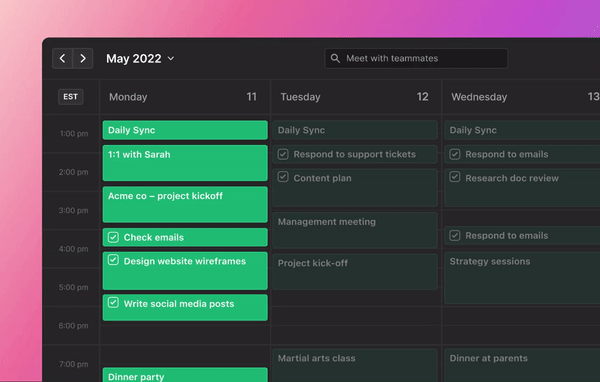In a world where only 20% of people feel they have a grip on their daily workload, mastering the art of daily planning becomes not just a tool but a lifesaver. It's more than jotting down tasks; it's about orchestrating your day to maximize productivity and minimize stress.
In this guide, we dive into the depths of daily planning, unearthing strategies, and tools that can transform how you manage your time.
Whether you're a project manager drowning in deadlines or a business owner juggling multiple hats, these insights are tailored to help you regain control (and a sense of calm) while optimizing your day.
What is daily planning?
Daily planning might seem straightforward, but what is it really?
First, it's about organizing your day around daily goals (in advance), usually the night before or first thing in the morning.
This practice helps you prioritize daily tasks, manage time effectively, and reduce stress. Let's look at an example.
Imagine you're a café owner. Your day might start at 6am with fresh pastries and coffee preparation. By planning, you dedicate the first hour to baking and brewing. Then, from 7 to 9am, you focus on serving customers during the morning rush. Afterward, you allocate time for inventory checks and ordering supplies. By lunch, you're reviewing staff schedules and handling administrative tasks. Each time block is dedicated to specific tasks, ensuring nothing crucial is overlooked.
But even more importantly, daily planning isn't just about work tasks. It includes time for your personal life, like a 30-minute afternoon walk or dinner with your family.
This balance prevents burnout and keeps you energized so you can tackle what you need to with a clear head.
 |
So, what does daily planning look like in your business? Right now, it might be chaos.
Messy desks, a long list of tasks, and Post-it notes everywhere. It all piles up when you're busy. But your system, or lack of one, could do more harm than good.
Why is daily planning important?
The pain of an unplanned day can be frustrating. Let’s look at why daily planning is crucial using a range of examples:
Helps you focus and prioritize
Imagine you’re a graphic designer with several complex projects. By planning ahead, you can prioritize tasks based on deadlines (and your precious time), making sure high-priority projects, like a client's urgent website update, are completed first.
Boosts efficiency
By setting aside specific time blocks for emails, client meetings, and administrative work, a marketing agency owner ensures that each task gets a dedicated time block (and) attention, reducing time wasted on multitasking or indecision.
Reduces stress
Imagine a teacher without a daily plan. They might forget to prepare for a particular class or overlook grading work and giving feedback in time for an important assignment. Planning helps avoid such last-minute chaos (and invokes a sense of calm).
Improves time management
For instance, a fitness trainer with a planned schedule can allocate time for client sessions, preparations, personal training, administrative responsibilities (and a block for lunch!) This helps them ensure a balanced, efficient and healthy work week that factors in their energy levels and available time.
Set clear goals
A freelance writer with a daily game plan can remain focused on a specific task and achieve more than if they mix them together.
For example, they might have blocked their time to write articles from 9 am to 1 pm. Then 2 pm to 5 pm can be spent on research for future ones.
This clarity of daily actions helps achieve objectives, and daily and long-term goals without breaking concentration for tasks requiring different skill sets.
Work-life balance
Daily planning should also include personal and leisure time.
A busy business owner might work frequent breaks into their schedule and block 6 pm onwards to ensure they spend enough time with their family and friends to maintain a healthy work-life balance.
Five daily planning techniques you can use no matter which planner you use
Whether you’re someone who likes to plan down to the minute or prefer a more relaxed approach to your day, here are five ways you can make your days more streamlined:
1. Master your morning routine
Mastering your morning routine is a game-changer for daily planning, no matter your daily planning process.
Start by waking up at the same time each day — consistency is key here.
Then take a leaf out of successful people's books to find activities to help you start your day right.
For example, Oprah begins her day with meditation while Mark Zuckerberg goes for a run.
Try incorporating some exercise to get your blood flowing, like a jog or yoga.
 |
Enjoy a nutritious breakfast — think smoothies or whole grains.
Finally, set aside a few minutes to glance over your day planner and action items for the day
This ritual of self-care and focus sets a positive and productive tone for your day.
2. Eat that frog
Inspired by Mark Twain's advice, this technique means tackling your most challenging task first.
For example, if you're dreading a tough client call, do it first thing.
By dealing with the hardest task early, you sidestep procrastination. It's like swallowing a frog — if you have to do it, do it first thing and all at once. Completing the biggest task can give you a huge sense of achievement (and the he rest of your actionable tasks will seem easier in comparison).
3. Prioritize with the Eisenhower Matrix
President Dwight D. Eisenhower developed the Eisenhower Matrix to prioritize tasks while under pressure and with little time to decide where his attention was most needed.
This method divides individual tasks into four categories:
- Urgent and important
- Important but not urgent
- Urgent but not important
- Neither urgent nor important
For instance, preparing a client proposal (urgent and important) takes precedence over rearranging your office (neither urgent nor important).
By categorizing tasks for your daily plans, you avoid spending all of your time on urgent but less important tasks, like constantly checking emails.
4. Block your time
With this approach, you schedule tasks into blocks of time, each dedicated to a specific task or type of work. It's creating a mini-schedule out of larger goals to keep you focused.
For example, you might set aside 9 am to 11 am for deep work like developing a marketing strategy.
5. Avoid task switching
Task batching involves grouping similar tasks and tackling them in one go. It's like doing all your grocery shopping for the entire week in one trip, doing all your laundry at once, or grouping bookkeeping and bill paying together.
This reduces mental load because you're not trying to jump between tasks that require completely different skills.
For instance, allocate a specific time to answer all emails or make phone calls instead of addressing them sporadically throughout the day.
By focusing on similar tasks in one block, you streamline your process and save precious time.
With these techniques, you’ll be well on your way to a streamlined day. But if you want to level up even more, it’s time to ditch the manual to-do list.
What are the best daily planner tools?
Just like there's a variety of choices for physical planners, going digital opens up a world of possibilities, too.
We've checked out several options with cool features or pocket-friendly prices. Depending on what you need, whether syncing with your favorite app, specific organizing functions, or advanced features powered by AI, there's something for everyone.
1. Motion
For those looking to streamline their business schedules, Motion is a standout choice. It's available for individuals or teams, offering unique tools to manage and track projects effectively.
Features:
- Motion uses AI to break down tasks into smaller, more manageable parts.
- It organizes tasks efficiently, alerting you to potential deadline misses.
- Sync with other apps like Google Docs and Zapier for easy access anywhere.
- The team digital calendar syncs with Google Calendar, and task assignments help keep everyone aligned.
- Create and use daily planner app templates for regular tasks and projects.
- View all tasks in one place and keep detailed task notes, with team commenting.
- Limit scheduled meetings to stay focused.
- Set preferred meeting times for easy scheduling.
Pricing:
- Individual monthly: $34; yearly: $19/month.
- Team monthly: $20/user; yearly: $12/user.
- Both options include a 7-day trial with credit card details.
AI and Motion:
- Automatically builds and adjusts schedules based on priorities.
- Prioritizes and reschedules tasks for you.
- Syncs and schedules meetings, integrating multiple calendars.
- Tracks project tasks and progress.
- Blocks time for focused work and schedules personal tasks with privacy options.
- Motion takes over routine tasks, letting you focus on what's important.
Summary:
Motion excels for individuals and businesses, particularly for project teams. It's ideal for managing service businesses like IT, marketing, or real estate and even for tech needs in traditional businesses like plumbing or electrical work. Available as a mobile, web, and desktop app, its flexibility is a major plus. While it's slightly pricier for individuals, its capabilities offer great value, especially for businesses and teams.
2. Sonsuma
Sunsama is akin to a classic daily paper planner, but as an online planner, it focuses on individual planning rather than team collaboration.
Features:
- Consolidate daily tasks, meetings, and goals.
- Integrates with various apps, including calendars, email, and productivity tools.
- Schedule daily tasks.
- Sync across all integrated apps.
- Drag tasks from Slack and Gmail.
- Customize with dark mode, shortcuts, and productivity analytics.
Pricing:
- Monthly: $20; yearly: $16.
- Sunsama offers a 14-day trial without requiring a credit card.
Summary:
Sunsama updates the traditional planner for the digital era, ideal for individuals ready to get rid of their grocery lists approach to planning. It seamlessly works with team productivity tools like Slack and GitHub.
3. Routine
Routine is a new productivity app still in its early stages, available through a waitlist for its free Starter level.
Features:
- Sync with Google Calendar
- Separate calendars for each project, viewable collectively.
- Personalized productivity dashboard.
- Custom shortcuts.
- Syncs schedules, notes, and tasks across devices.
Pricing:
- Starter: Free.
- Professional: $15/month (not yet available).
Summary:
Routine's Professional tier promises an extensive feature set, though it's currently limited. The two-integration limit may be restrictive for some users.
4. Akiflow
Akiflow is marketed as a top-tier time-blocking platform that's ideal for focusing on daily chores and tasks.
Features:
- Time-blocking for daily task optimization.
- Integrates with commonly used apps.
- Task and reminder creation via the command bar.
- Daily routine management with "Rituals.”
Pricing:
- Monthly: $24.99; yearly: $14.99.
- Offers a 7-day trial, no credit card required.
Summary:
Akiflow is great for time organization and focus, though it's pricier than some multi-featured options, especially compared to AI-driven alternatives.
5. Fantastical
Fantastical isn't just for business users; it's also for individuals and families needing organizational help. It operates on a calendar system and syncs with CardHop for task automation.
Features:
- Create tailored calendars for different needs.
- Focus function for specific events and tasks.
- Attach and sync files and photos.
- Seamless syncing across Apple devices.
Pricing:
- Individuals: $4.75/month
- Families (up to 5): $7.50/month
- Businesses: $4.75/user/month.
- 14-day trial available, no credit card needed.
Summary:
Fantastical is suitable for managing business tasks or family activities, particularly for iOS users. Adding Cardhop can increase costs, positioning it as a pricier than the cheaper option with AI built in and out of the box.
3 pro tips to get the most out of your daily planning
Regardless of your digital task manager, there are some key things to master to get the most out of your daily planning.
1. Review and adjust regularly:
- Take a few minutes at the end of each day to celebrate what you’ve achieved and note what's left unfinished. This will give you a plan for the next day and a sense of accomplishment.
- Adjust your plan for the next day accordingly, reprioritizing critical tasks if necessary.
- Reflect on your productivity and identify areas for improvement to refine your planning process over time. What works for you today might not work with you tomorrow.
2. Limit distractions and interruptions:
- Identify common distractions in your environment and take proactive steps to minimize them.
- Use tools like website blockers or noise-canceling headphones to create a focused work environment.
- Communicate your availability to colleagues or family to minimize interruptions during designated work periods.
3. Let AI-driven tools manage your day for you
- Use AI-driven tools and software to automate repetitive tasks such as email filtering, data entry, or scheduling appointments.
- Delegate tasks to virtual assistants or task management apps that handle reminders, follow-ups, and deadlines.
By offloading these routine tasks, you free up more time and mental energy to focus on higher-value activities that require your expertise and creativity.
The to-do list is dead: Automate your daily schedule with Motion
The traditional to-do list is out, and smarter, more dynamic methods are in.
With Motion, daily planning elevates your productivity and efficiency. By automating routine tasks and integrating AI-driven tools, you unlock new levels of effectiveness in your work and daily life.
Don't let your schedule run you. Take charge, optimize your daily planning, and watch your days transform from chaotic to streamlined.
Ready to revolutionize your time management?
Give Motion a try and experience the change for yourself. Start your free trial today and make every minute count.

Haylee is a versatile writer with ten years of experience. With a background in marketing and writing for large SaaS companies, Haylee brings her passion for the written word to diverse projects ranging from blog posts and ebooks to direct marketing campaigns.
